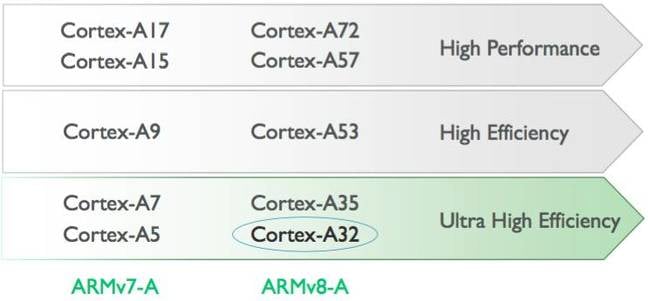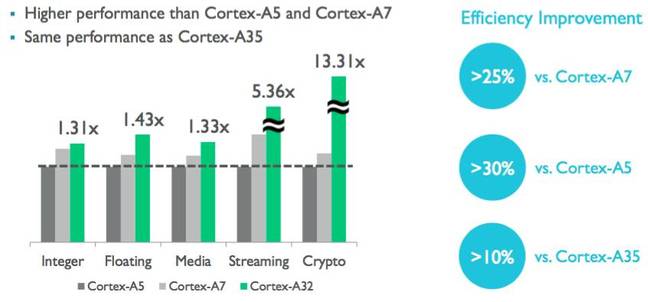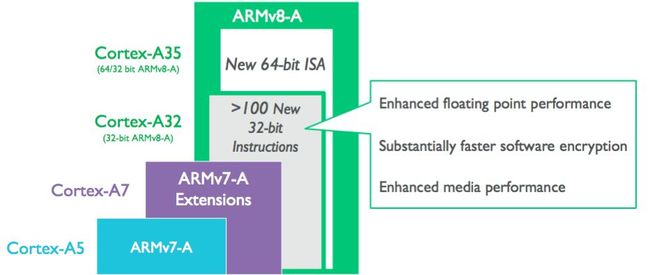This article is more than 1 year old
Wee little ARM Cortex-A32 core design tugs at engineers' sleeves, wants IoT love too
Critter squeezes in between 64-bit A35 and older A5, A7 CPUs
ARM has designed the Cortex-A32, another processor core for wearables, the Internet of Things, and anything else tiny and most likely battery operated.
The new Cortex-A family member uses the ARMv8-A architecture – normally found in 64-bit cores – but is itself a 32-bit CPU. It is essentially a follow up to the Cortex-A5, A7 and A35, which emerged in 2009, 2011 and 2015 respectively. All three are aimed at low-end mobile devices, embedded systems, and recently, the Internet of Things and step-counting smartwatches.

Comparison ... where the A32 fits in between ARM's application Cortex cores
For system-on-chip engineers looking for something a little more modern than the 32-bit A5 and A7 but not as complex as the 64-bit A35, ARM has come up with the A32 and optimized it for 32-bit code. Losing the 64-bit support leaves the A32 with an ARMv7-A aka AArch32 instruction set (also known as A32 mode, conveniently) and the benefits of the cleaned-up ARMv8-A architecture underneath. (You also get a T32 Thumb mode, too.)
That means the Cortex-A32 is 10 per cent more efficient than the A35, in terms of integer performance per watt consumed, according to the core's designers. It also means your 32-bit ARMv7-A firmware is still good on the Cortex-A32.
The A32 nudges ahead of the A5 and A7 in terms of integer and float-point math performance, and rockets ahead when doing cryptography and memory streaming, all thanks to architectural improvements – these include a redesigned in-order eight-stage pipeline, a redesigned instruction fetch unit, and better caching performance to stream data out of memory.

How ARM says the cores compare from A5 to A32 to A35
Each core is identical: 32KB L1 caches, NEON SIMD, 1MB L2 cache, and 28nm process
The instruction set twist is perhaps a little tricky to get your head around if you're new to the ARM world (or used to the simpler, older days) but here's how it stacks up now:

ARM calls the Cortex-A32 the "smallest, lowest power ARMv8-A processor" for 32-bit applications. A quad-core A32 design, running at 1GHz, should consume no more than 75mW per core; a single core in its smallest configuration with 8K L1 caches, requiring less than 0.25 mm2 in die area, should need no more than 4mW at 100MHz. So these blueprints can, like all of ARM's designs, scale up and down for SoC makers to select and churn out chips for particular products.
You can find all the specs over here. The core, which is perfectly capable of running a modern multitasking operating system like Linux or Windows IoT, is available for licensing now. ®
